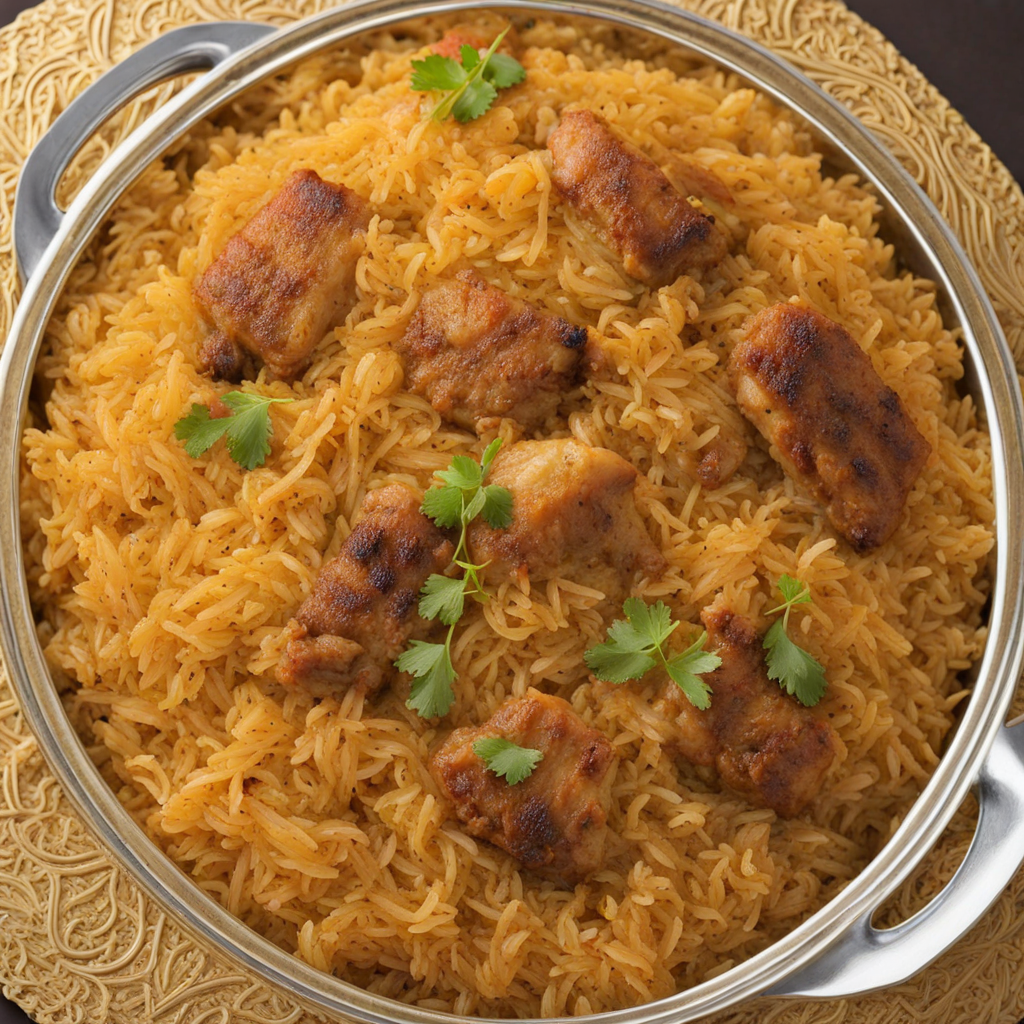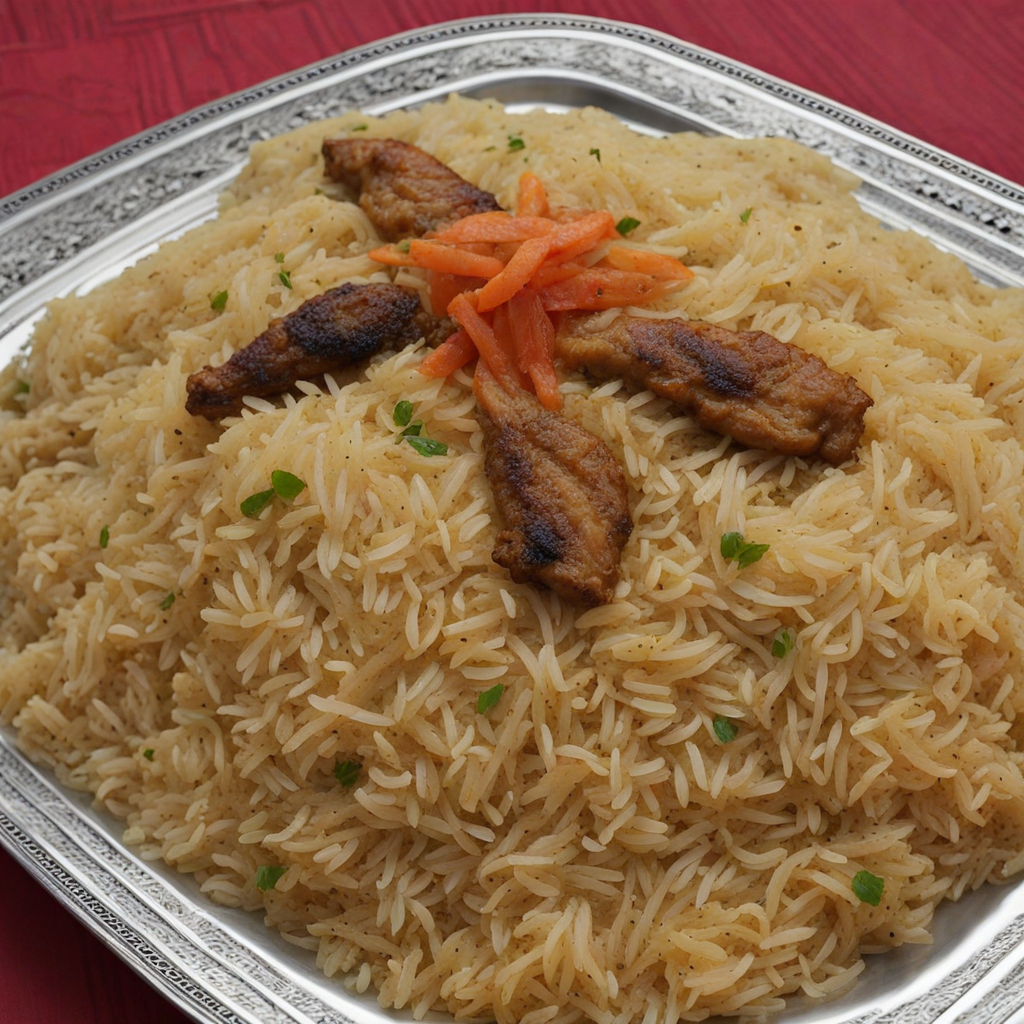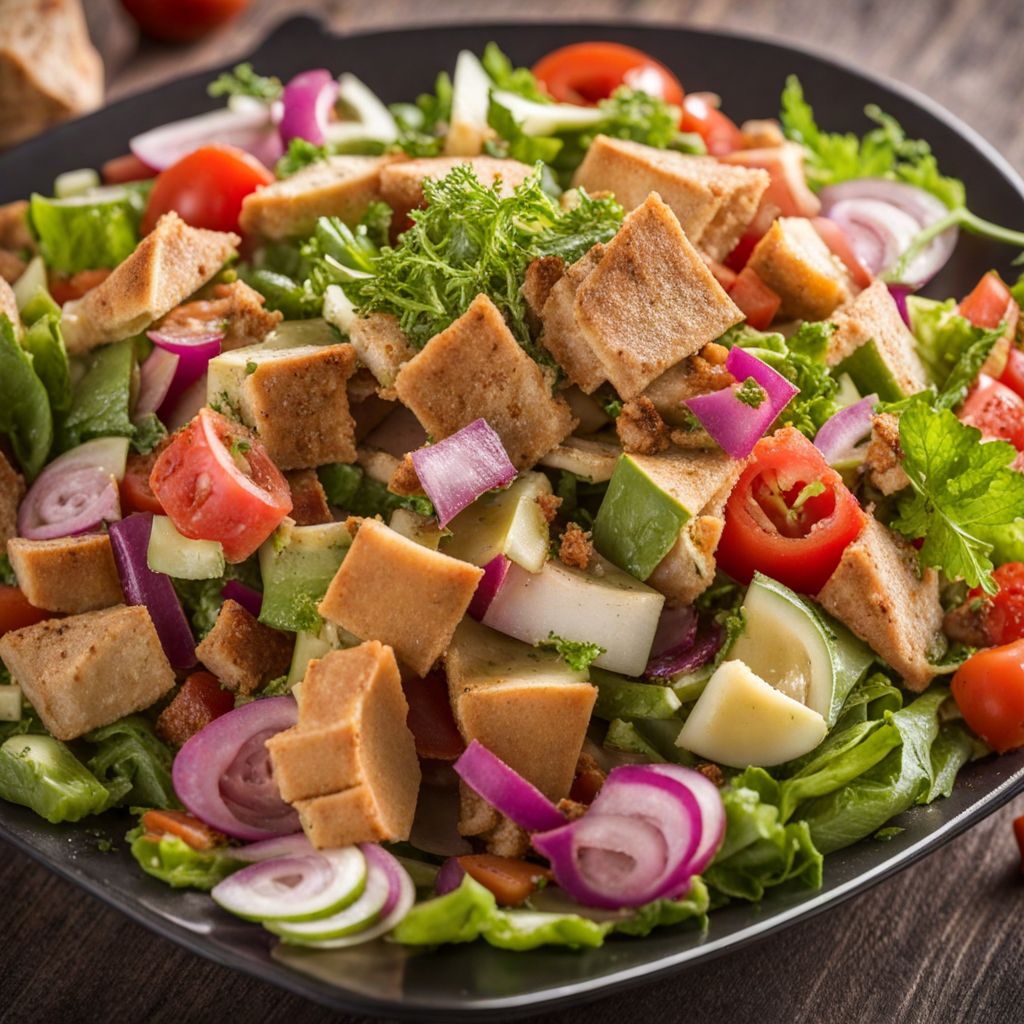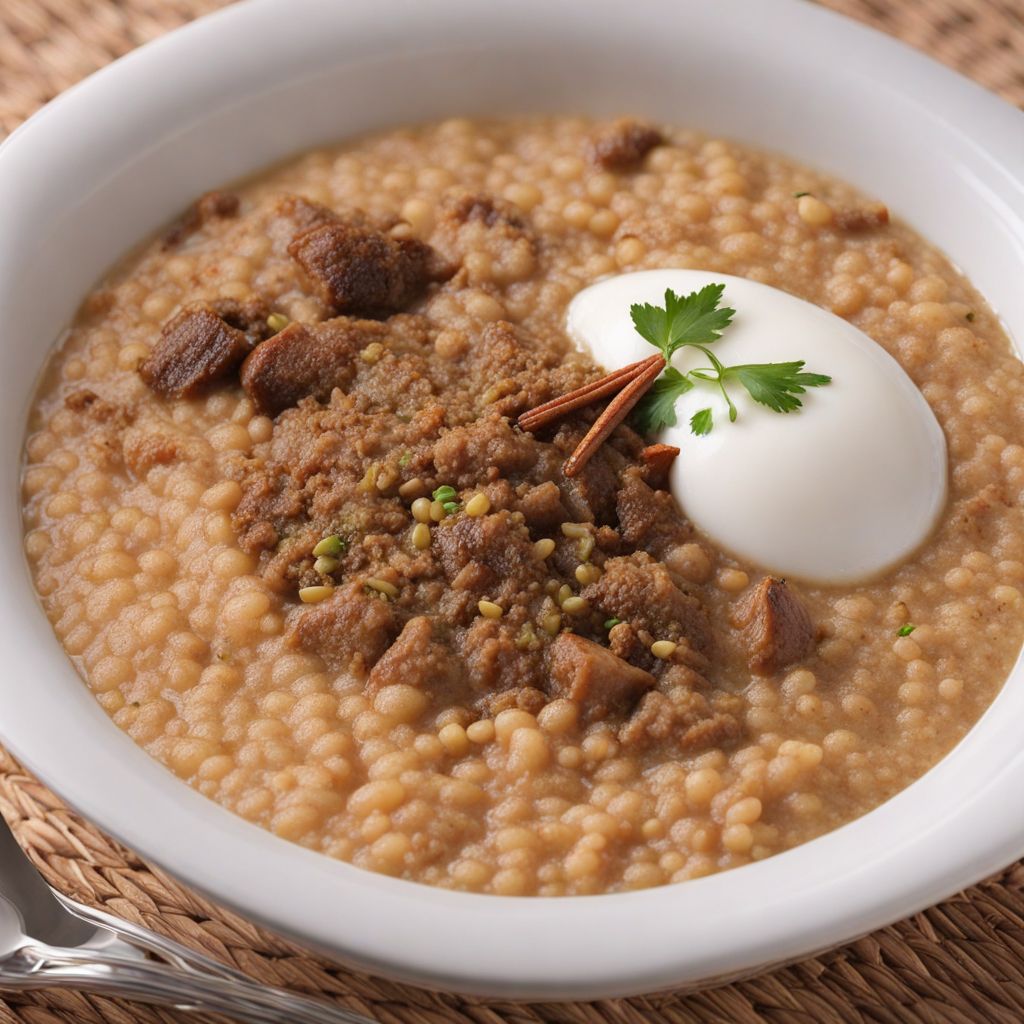Machboos
Maqbous, a traditional dish from Kuwait, is a fragrant and flavorful rice dish that has roots in the broader culinary practices of the Arabian Peninsula. Its history can be traced back to the influence of Bedouin culture, where cooking methods often involved the use of spices and aromatic ingredients to enhance the flavors of available resources. Over time, as trade routes flourished and cultural exchanges occurred, Maqbous evolved, incorporating various spices and techniques from neighboring regions, making it a beloved staple in Kuwaiti households. The flavor profile of Maqbous is a harmonious blend of spices and ingredients that create a rich and aromatic experience. It is typically characterized by the warmth of spices such as cumin, coriander, and cardamom, which infuse the rice with a delightful aroma. The dish often has a subtle heat from chili peppers, balanced by the sweetness of caramelized onions and the savory depth of meat, usually chicken or lamb. The addition of saffron or turmeric gives the rice a vibrant yellow hue, enhancing both its visual appeal and taste. The overall flavor is a perfect balance of spicy, savory, and slightly sweet, making every bite an exploration of Kuwaiti culinary heritage. Preparation of Maqbous is a meticulous process that reflects the importance of tradition in Kuwaiti cooking. The dish begins with marinating the meat in a mixture of spices, yogurt, and sometimes lemon juice, allowing it to absorb the flavors. The marinated meat is then browned in a pot, often with a generous
How It Became This Dish
Origin of مجبوس مجبوس, often referred to as "Majboos" or "Machboos," is a traditional dish that has its roots in the Arabian Peninsula, particularly in Kuwait. The word "مجبوس" itself comes from the Arabic verb "جبس," which means to press or compress, referring to the way the rice is cooked in the dish. This culinary staple is a reflection of the region's history, where the Bedouin way of life necessitated portable and hearty meals. The origins of مجبوس can be traced back to the influences of various cultures that have interacted with the Arabian Peninsula over centuries. The dish is believed to have been inspired by the Persian pilaf and Indian biryani, both of which share similarities in cooking techniques and ingredients. As trade routes flourished in the region, particularly during the time of the Silk Road, spices and cooking methods were exchanged, leading to the evolution of dishes like مجبوس. Cultural Significance In Kuwait, مجبوس holds great cultural significance and is often seen as a symbol of hospitality and community. It is a staple dish served during festive occasions, family gatherings, and celebrations such as weddings and religious holidays. The preparation of مجبوس is often a communal activity, with family members coming together to cook and enjoy the meal. The ingredients used in مجبوس vary, but they typically include rice, meat (such as chicken, lamb, or fish), and a blend of spices. The dish is characterized by its vibrant flavor profile, which is achieved through the use of spices like saffron, cardamom, cumin, and turmeric. The cooking method involves layering the meat and rice, allowing the flavors to meld together, which showcases the culinary techniques passed down through generations. Development Over Time As Kuwait modernized and the culinary scene evolved, مجبوس adapted to new influences while retaining its traditional roots. The dish has become a point of pride for many Kuwaitis, often featured in local restaurants and homes alike. In contemporary cuisine, chefs experiment with variations of مجبوس, introducing new ingredients and methods while paying homage to the original flavors. In the 20th century, as globalization intensified, مجبوس gained recognition beyond Kuwait's borders. It became popular in neighboring Gulf countries, where each nation adapted the dish to reflect its unique culinary traditions. For instance, in Bahrain, the dish may incorporate dried fruits, while in Qatar, it might be served with a side of yogurt or salad. Modern Variations Today, there are numerous variations of مجبوس, reflecting both regional preferences and personal tastes. Some families have their secret recipes, passed down through generations, that include unique spice blends or cooking techniques. Vegetarian versions of مجبوس have also emerged, appealing to those seeking plant-based options while still capturing the essence of the dish. In recent years, international culinary trends have further influenced مجبوس, leading to fusion dishes that incorporate ingredients like quinoa or even sushi rice. The dish has transcended its traditional boundaries, showcasing the versatility of Kuwaiti cuisine while maintaining its foundational flavors. Global Recognition The global recognition of مجبوس has also been bolstered by the rise of social media and food blogging. Food enthusiasts and chefs alike have shared their interpretations and experiences with this traditional dish, bringing attention to its cultural significance and culinary intricacies. Food festivals and cultural events, both in Kuwait and abroad, have celebrated مجبوس, further solidifying its status as a cherished dish in Middle Eastern cuisine. Food tourism has also played a role in promoting مجبوس, with travelers seeking authentic experiences. Visitors to Kuwait often seek out local restaurants where they can savor this dish, immersing themselves in the rich flavors and cultural stories that accompany it. Conclusion In conclusion, مجبوس is more than just a meal; it is a representation of Kuwaiti heritage, hospitality, and communal spirit. The dish has a dynamic history, evolving from its Bedouin roots to become a beloved culinary staple that continues to unite families and communities. As it adapts to modern trends while retaining its traditional essence, مجبوس stands as a testament to the enduring legacy of Kuwaiti cuisine and its ability to bring people together across generations. Through the years, مجبوس has not only nourished the body but also served as a bridge between the past and the present, showcasing the rich tapestry of cultural influences that have shaped it. Its journey from the deserts of Arabia to global recognition reflects the resilience and adaptability of Kuwaiti culinary traditions, ensuring that this dish remains a cherished part of the nation's identity for years to come.
You may like
Discover local flavors from Kuwait







